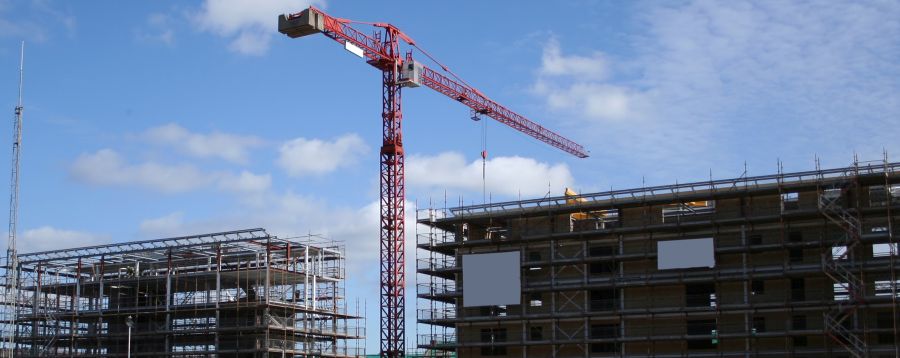
Safety Tip: 10 Steps to Safer Crane Operation

In November 2010, OSHA issued a new crane safety standard. Along with the new standard is a certification process that will be fully implemented in 2017. It calls for crane operators and those working around cranes (such as the people making signals) to pass a written test and practical test of their skills.
Use these tips, adapted from an article by Safety Management Group to help ensure safer crane operation on your worksites:
1. Use a certified operator. Even though operator certification is not yet required, safety-conscious contractors and owners would be wise to use identical standards on their jobsites immediately. Riggers also should be properly trained on setting the crane up for the specific load and circumstances.
2. Inspect, inspect and inspect. Annual inspections are not enough. Check operating functions daily to ensure everything is working properly and there are no defects or cracks in the support members. Today’s cranes use materials that are less tolerant of mishandling. Longtime operators are often surprised to discover that the tricks they used to push cranes beyond the limits in the past can easily create very dangerous situations with newer cranes.
3. Know what’s below. Cranes are only as strong and stable as the surface they stand on. Learn the classification of the soil or material under the crane and adjust setup and load limits accordingly. Extending outriggers don’t guarantee stable footing, because excess force can cause them to push through the ground, resulting in a tip. The crane’s load chart can help you determine whether your lift will be safe.
4. Plan for swing. The counterweight and boom travel within a specific arc that’s called the swing radius. It’s important to ensure that the area within that radius is barricaded off and to establish a control zone for those authorized to work in the immediate area. Also check the area every day to ensure that there are no objects the boom might strike, such as power lines. If such obstacles exist, be sure operators and other workers are aware of the plan for avoiding them.
5. Use cranes properly. Cranes are engineered for vertical lifting. That doesn’t stop some crews from trying to use them for side loading or other improper activities. Using a crane to drag something across the ground or from under an obstacle puts extreme stress on the boom, the turntable and all the structural members. It could potentially weaken key components and lead to their failure. If someone on the site has used a crane improperly, be sure to inspect it thoroughly to ensure that its integrity has not been impaired.
6. Stay in touch. Whether you use radios, air horns or hand signals, there needs to be clear communication between the operator and the other workers. That’s especially critical when a crane is making a lift in which the operator cannot see the load, such as when air handling equipment is being delivered through an opening on another side of a structure. Don’t assume that everyone knows how instructions will be communicated. Follow OSHA’s specific guidelines and make sure that everyone on the site knows exactly what each signal means.
7. Pay attention. Operators who are talking on cell phones while moving the crane, napping between lifts or distracted in other ways can create danger for fellow workers. Everyone associated with a crane needs to stay alert and focused on the job at hand – especially on critical or difficult lifts.
8. Avoid manbaskets. What seems like a simple way to move workers creates hazards that must be tested and addressed before work begins, such as providing proper fall protection, verifying basket capacity and assuring the basket is properly attached. In addition, the safety of the employees in the basket is entirely dependent on the skill of the operator. A simple mistake could have tragic consequences. Before using a manbasket, consider whether an articulating boom lift or a scissor lift might provide a safer alternative.
9. Don’t use cranes for storage. In areas where site security is a concern, it’s not unusual to see a compressor suspended for safekeeping at the end of the day. In addition to the danger that someone could walk beneath it, a strong wind could cause the load to sway – perhaps to the point of toppling the crane. But an even better reason not to do this is that most of today’s newer cranes are hydraulically-operated. A small leak anywhere in the system will eventually reduce the hydraulic pressure to the point where the boom will drop and the suspended load will fall on whatever is below it – maybe a more expensive piece of equipment.
10. Start with a plan. Each lift is different, so it’s important to review load weight capacities, the integrity of the equipment, the possible effect of wind and other factors. The operator, riggers and other workers involved with the lift should be part of that planning process.
Crane Safety Resources:
- OSHA Crane, Derrick and Hoist Safety page
- National Commission for the Certification of Crane Operators (NCCCO)
- Crane safety site CraneAccidents.com
- Crane load charts and other resources at Cranehunter.com
- Crane safety signs and hand signal training materials at ComplianceSigns.com
OSHA WARNING Safe Crane Operation Untrained Operator Sign
No matter what might possess you or someone else without proper crane training to attempt to operate a crane, do not do it. It is a very complex process and it will end poorly for you and for others. Please, just be safe and leave things that require professional training to the professionals.

